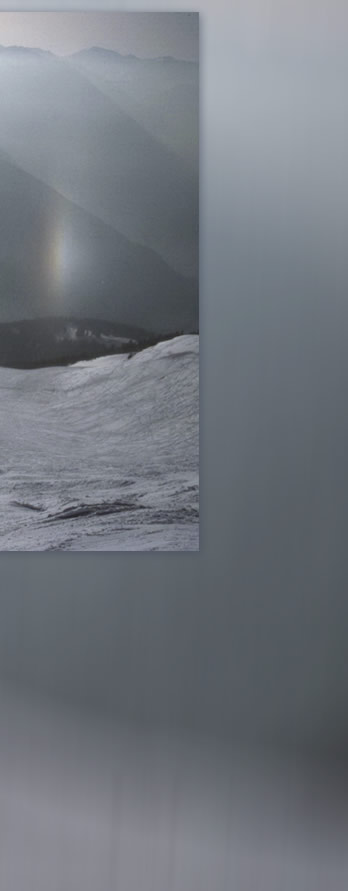 |
 |
 |
Formed by diamond dust crystals, a central subsun is flanked by prismatic subparhelia (sub sundogs). Subsuns are the same distance below the horizon as the sun is above. Direct reflection of the sun by the upper and lower near horizontal faces of plate crystals forms them. Subparhelia are often thought to be sundogs produced by light from the often blindingly bright subsun. Not so. The glints that make up ice halos are each from light rays that have passed through one crystal only. Subparhelia result when light enters a crystal side face, is reflected internally from the top and bottom faces an ODD number of times and then leaves another side face inclined at 60° to the first. The odd number of reflections directs the ray upwards and so the parhelion appears beneath the horizon. Except when the sun is near the horizon, sundogs are also formed by rays that are similarly internally reflected. The difference is that an EVEN number of reflections produce a sundog. |
 |
 |
 |

| About - Submit | Optics Picture of the Day | Archive | Previous | Next | Today |